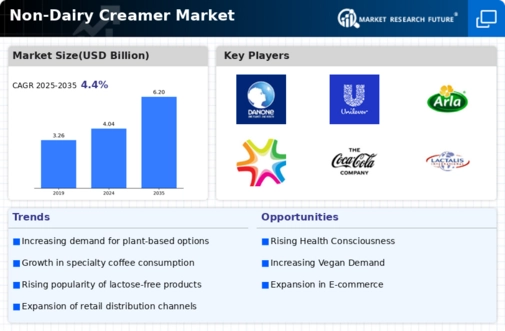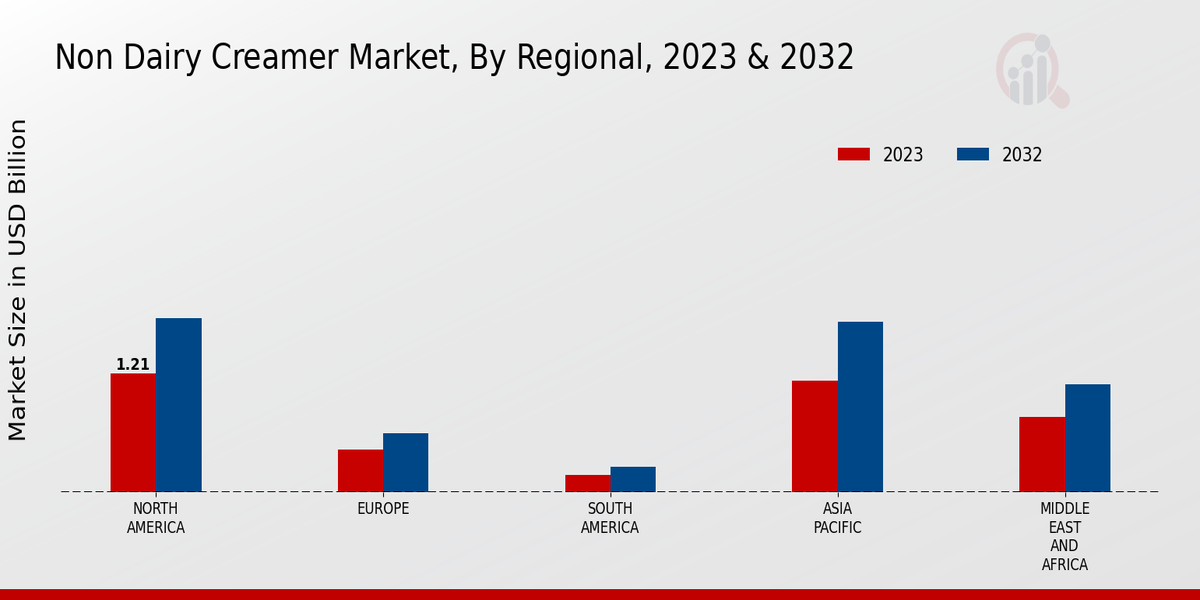Market Growth Projections
Rising Vegan and Plant-Based Trends
The increasing consumer inclination towards vegan and plant-based diets is a pivotal driver for the Global Non-Dairy Creamer Market Industry. As more individuals adopt these lifestyles, the demand for non-dairy alternatives, including creamers, surges. This trend is not merely anecdotal; it reflects a broader shift in dietary preferences, with many consumers seeking products that align with their ethical and health considerations. The Global Non-Dairy Creamer Market Industry is projected to reach 4.04 USD Billion in 2024, indicating a robust market response to these evolving consumer demands.
Technological Advancements in Production
Technological innovations in the production of non-dairy creamers are likely to impact the Global Non-Dairy Creamer Market Industry positively. Advances in processing techniques and ingredient sourcing enable manufacturers to create creamers that better mimic the taste and texture of dairy products. This improvement in quality can attract consumers who may have been hesitant to switch from traditional creamers. As the industry embraces these advancements, the Global Non-Dairy Creamer Market Industry is poised for growth, potentially achieving a compound annual growth rate of 3.97% from 2025 to 2035.
Diverse Applications in Food and Beverage
The versatility of non-dairy creamers across various food and beverage applications serves as a significant driver for the Global Non-Dairy Creamer Market Industry. These creamers are not limited to coffee; they find utility in baking, cooking, and even as ingredients in sauces and dressings. This broad applicability enhances their market appeal, attracting a diverse consumer base. As the Global Non-Dairy Creamer Market Industry continues to evolve, the potential for innovation in product formulations and applications could further stimulate growth, aligning with consumer preferences for multifunctional food products.
Health Consciousness and Dietary Preferences
Heightened awareness regarding health and wellness significantly influences the Global Non-Dairy Creamer Market Industry. Consumers are increasingly scrutinizing ingredient lists, favoring products that are perceived as healthier alternatives to traditional creamers. Non-dairy creamers often boast lower cholesterol levels and fewer calories, appealing to health-conscious individuals. This shift in dietary preferences is expected to propel the market forward, as the Global Non-Dairy Creamer Market Industry anticipates growth to 6.2 USD Billion by 2035, reflecting the sustained demand for healthier options.
Increasing Availability and Distribution Channels
The expansion of distribution channels for non-dairy creamers is a crucial driver for the Global Non-Dairy Creamer Market Industry. With the rise of e-commerce and the increasing presence of non-dairy products in retail outlets, consumers have greater access to these alternatives. This enhanced availability not only meets growing consumer demand but also encourages trial among those who may not have previously considered non-dairy options. As the Global Non-Dairy Creamer Market Industry continues to grow, the proliferation of distribution channels will likely play a vital role in reaching a broader audience.











